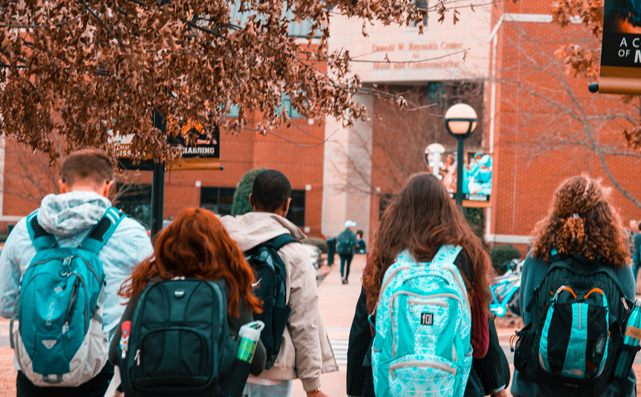Ill-fitting pack can cause injury, muscle stress

Students have to do a lot of heavy lifting in school when you consider all of the homework, writing or math assignments. And let’s not forget the act of trying to get good grades.
They shouldn’t have a heavy or ill-fitting backpack added to that load.
When choosing a backpack for your student, there are several things you and your child can do to ensure the backpack is the right one.
First, work with your child to choose a color or design of his or her choice. The backpack will be an extension of the child’s style, and kids should have a say in something they are going to use every school day.
So you’ve decided on the design. Now it’s time to consider the fit.
Make sure the backpack has two wide, padded straps, advised Dr. Benjamin Hoffman in Parents magazine. A single-strap, across-the-body pack does not allow for equal distribution of weight and can cause muscle soreness and posture issues.
The bag also should be padded where it rests on your child’s back. One way to determine the quality of the padding is to do a rebound test. Squeeze the padding and let go so it can return to its original shape. It should not make popping sounds, and neither should it crumple like a piece of paper.
Make sure the pack also has a waist strap. This will help evenly distribute the weight of the pack and its contents, according to healthychildren.org, a parenting website. Equally important is making certain all straps are tightened so the pack rides 2 inches above the student’s waist.
The fabric is also important. It should be durable but lightweight. While leather and other heavier fabrics look good, keep weight and water resistance in mind. Make sure the zippers open and close easily (they are more durable than Velcro) and think about the books and binders that will be carried – does the backpack have sufficient pouches with enough room for everything?
Another factor is the load. Doctors recommend kids carry no more than 10% to 15% of their body weight in their backpacks. According to kidshealth.org, a heavy backpack placed improperly on the shoulders can pull a child backward, causing your student to bend forward at the hips to compensate. The result could be back, shoulder and neck pain.
Things your kids can do to help ease the load include:
- Encourage them to keep the majority of their books in their locker or desk, carrying only what they need for that class.
- Leave out the unnecessary extra weight caused by laptops, cellphones and video games.
- Make sure they only bring home the books needed for completing homework or studying, leaving the rest at school.
- Store the heaviest items, such as books, binders or laptop (if needed) closest to the child’s back for the best weight distribution.



